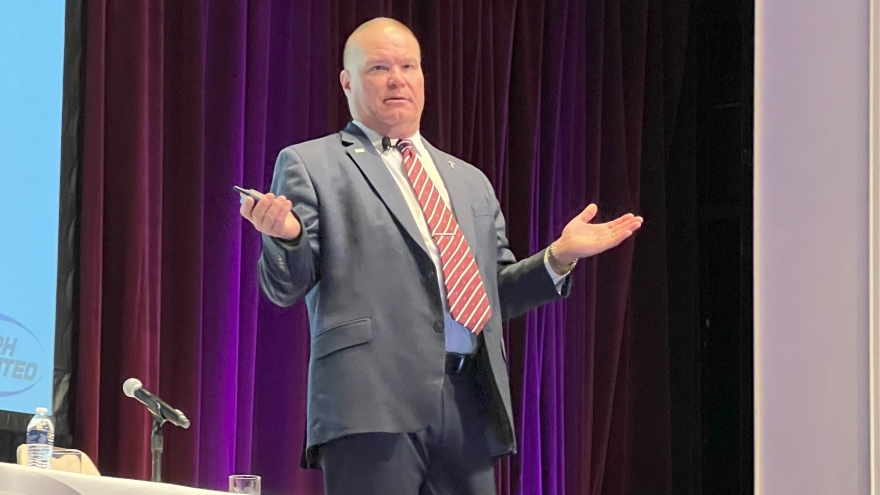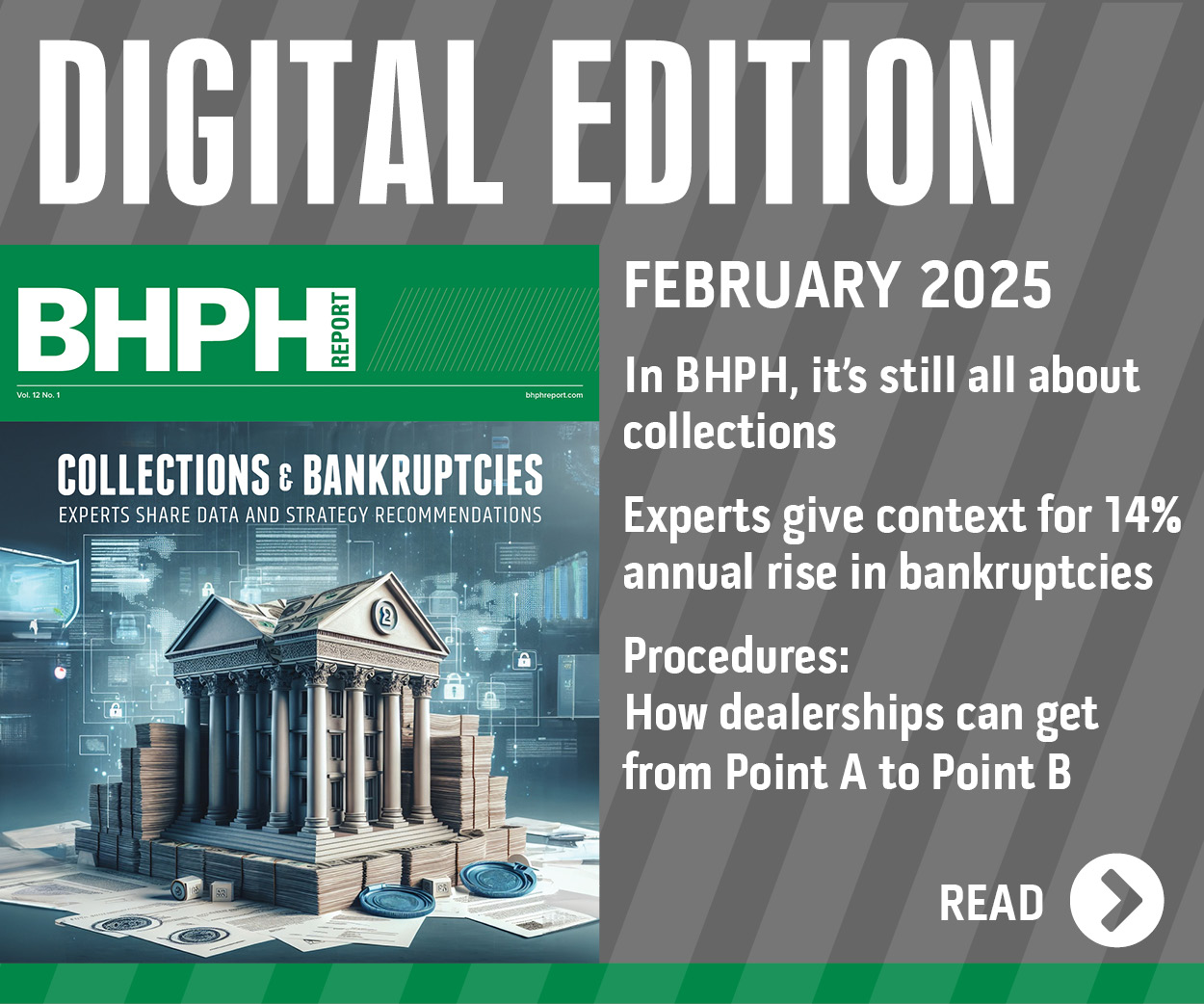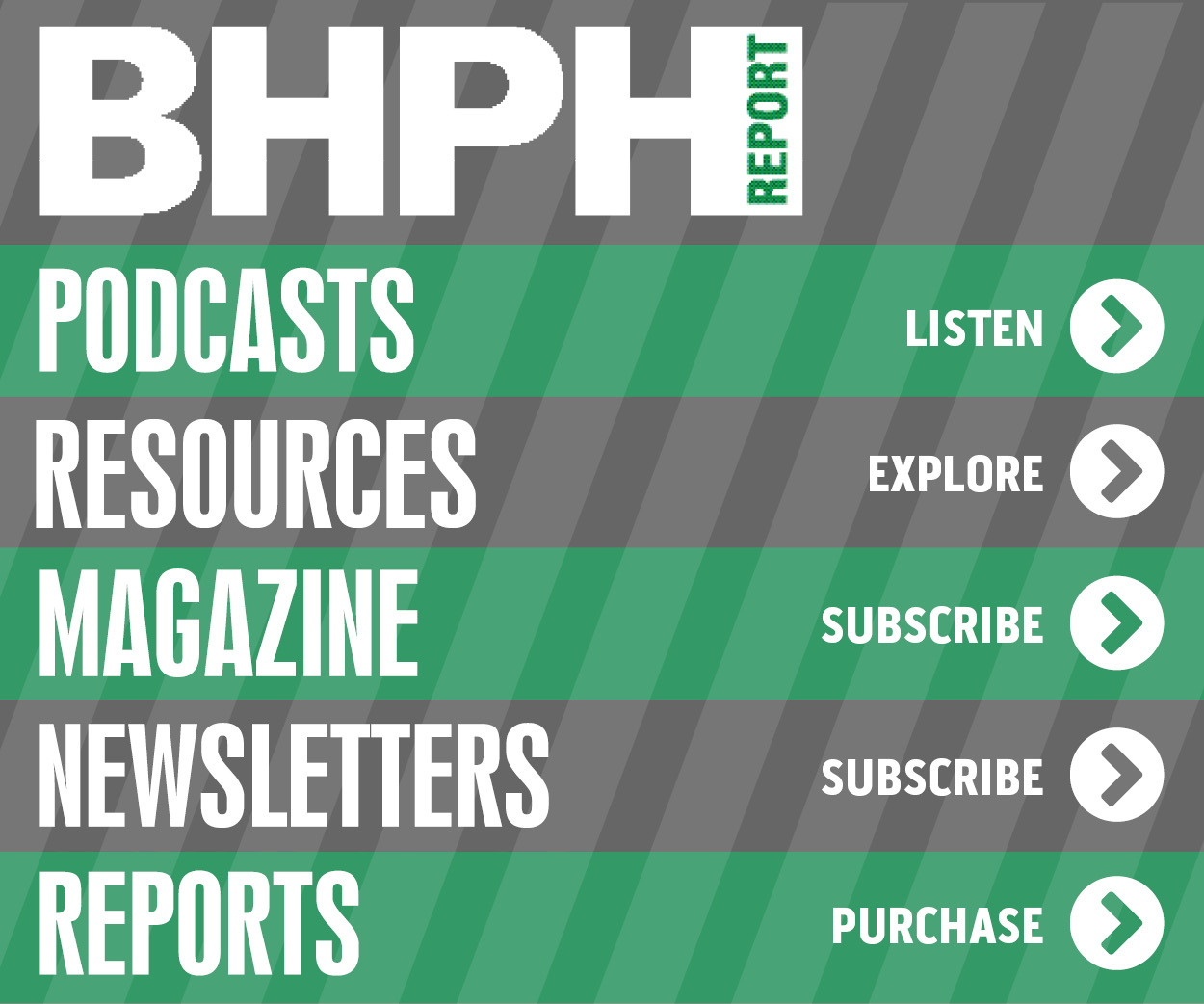Industry ‘legend’ lays out pros and cons of BHPH business models

NCM Associates 20 Group moderator and consultant Brent Carmichael has been involved with buy here-pay here and subprime finance for more than 30 years. Photo by Andrew Friedlander.
Brent Carmichael is no stranger to the buy here-pay here business.
With more than 30 years in BHPH and subprime finance, including 10 years with a large BHPH operation, he has seen and heard … well, if not all, then certainly most when it comes to that sector.
So when the longtime 20 Group moderator and dealership consultant for NCM Associates who is set to join NIADA tells BHPH dealers they should take a hard look at the way they do business, they tend to listen.
Not surprisingly, then, Carmichael spoke to a full room at the Bellagio in Las Vegas when he opened the recent BHPH United Summit with a session suggesting dealers should “Rethink and Update Your Business Model.”
The third annual BHPH United Summit, presented by a collaboration of vendors who serve the buy here-pay here industry, drew a record attendance of more than 400, according to event organizers.
Carmichael, who was introduced by Buckeye Dealership Consulting executive vice president Shaun Petersen as an industry “legend,” told dealers he was going to prepare for his session by listing all of the business models in buy here-pay here.
He began with those used by his 20 Group members. By the time the list reached three pages, he realized that wasn’t going to work, as there are countless ways to run a BHPH operation — different target markets, different collection methods, lease here-pay here, to name just a few.
That, he said, is the “10-foot” view.
But moving up to the “10,000-foot level,” he identified a few more general models based on the value of the vehicles being offered and the amount of risk the dealer is willing to take — high ACV, low ACV, high risk, low risk — and “split” models, which include a mix of BHPH and retail, and using the dealership’s related finance company to finance dealers for other dealerships.
Before the advantages and disadvantages of those models can be discussed, though, some definitions are necessary.
What constitutes high and low when it comes to vehicle value and risk?
To get an idea of the dividing line between high and low vehicle values, Carmichael asked dealers in the audience to suggest what they consider high and low ACVs. The answers ranged from $25,000 on the high side – from a dealer who said her business averages that amount – to $3,000 on the low end, but the consensus was $12,000-$15,000 represents a high ACV for vehicles acquired, while $7,000 is “about the average” for a low ACV model in the current market.
“If I asked those questions in 2019, where would we have been?” he asked. “Probably $7,000 would have been our high ACV, right? We would’ve been talking $3,000 or $4,000 as low.”
In the risk category, high risk begins with what Carmichael called “flip a coin, fog a mirror” when it comes to underwriting.
“If somebody can walk in and fog a mirror, I’m selling a car,” he said.
On the other end of that spectrum, low-risk dealers are more likely to use a scoring system in their underwriting and “are in that mode where I’m going to make sure I get as much information as humanly possible before I write a deal.”
Low risk can also include a more aggressive collection policy as opposed to high risk, which Carmichael said might be an, “ ‘I’ll text it for the first seven days and then maybe we’ll make a phone call’ kind of thing.”
Given those parameters, Carmichael laid out the pros and cons of those models.
With high ACVs, the advantages begin with inventory availability. It’s far easier, he contended, to buy a quality $12,000 or $14,000 car than a lower-end vehicle.
“If I had all the money in the world, this is probably the model I would run,” he said. “Why? I’m kind of fat and lazy. I can go to the auction and buy these cars every day, all day and probably pay closer to what the real money is on them than anything else. Doesn’t take that much skill. I can even do it.”
Customer selection is an obvious advantage, Carmichael said, noting, “It’s a lot easier to sell a 2018 than a 2010,” he said. “Easier to sell the Tahoe than the Taurus.”
But, he added, there’s more to it than that.
“Are you struggling with repeat business? If you are, one of the things you might need to take a look at is your inventory selection.
“We sold them the Taurus because they wanted the Tahoe and didn’t qualify for it, but we said, ‘I’ll tell you what. If you pay for that Taurus, we’ll stay with the Tahoe.’ That’s kind of the direction we want to go with our customer. We might not have that selection if you want to stay with the lower ACV.”
The cons of the high ACV model include a big one – money.
“Our nice young lady down here, if you want to take $5 million, that’ll last you about 90 days at $25,000 ACV,” Carmichael said. “You can sell two cars a month with that kind of money. So yeah, I’m going to have to have some deep pockets to get to that.”
In addition to the cost of the inventory, Carmichael said reconditioning costs for those higher-end vehicles is higher on average than lower-cost cars, in large part because “everything pretty much has to work, doesn’t it? AC’s got to blow cold, can’t be missing radio knobs, can’t have cracked windshields. So we have to put in a little bit more money on the front end.”
There’s also an increase in customer expectations. When someone buys a nicer, newer, late model, low-mileage car, they have higher expectations of how it will perform.
“They’re going to expect it to work, aren’t they?” Carmichael said. “And the first time it breaks down, what do they always say? ‘You just keep it.’ It doesn’t matter if it’s $25,000 or a $5,000 ACV car. If it breaks down, they don’t want it.”
The pros and cons of the low ACV model are a mirror image of high ACV. It obviously takes far less money to buy the less-than-$10,000 cars – that $5 million will last about 20 months’ worth of cash flow with a $6,000 average ACV.
That’s good, Carmichael said, but that’s about it in the way of advantages.
“It costs me less money to do that, but I’ve got to increase repair costs up front and after the fact,” he said. “Got to do a bit more reconditioning in some cases just to get past that.”
And, he added, customer selection is “the exact opposite” situation.
“They bought the Taurus, they paid for it,” he explained. “Now they come back in and guess what they can buy? Another Taurus. Or maybe it’s a Malibu this time. But they’re looking at the exact same car they just bought. Same payment, same everything. And they go, ‘Wait a minute, I paid you. I’m supposed to get something nicer out this.’ ”
The high-risk model offers one major benefit – volume. The easiest thing to do in buy here-pay here is selling a car, said Carmichael, saying it’s as simple as “open up the doors, you can sell the car. Fog a mirror, flip a coin, heads or tails, right? We can sell cars.”
The second-easiest thing to do is make a profit – on paper, at least. But that paper profit can work because “volume can outrun the risk.” Carmichael said a BHPH operation can charge off 65% of the units sold and still make money, as long as it maintains a high volume and operates cheaply.
The downside is the money doesn’t go very far, and keeping volume up is imperative, Carmichael said, “because you’ve got to keep churning.” There’s also pressure on collections, which is why collectors are constantly complaining about the dealership’s underwriting.
“They gripe about sales and underwriting,” he said. “Every time. ‘We never should have done this deal. If it was up to me, we wouldn’t have done this deal.’ Yeah, if it was up to you, we’d be selling one car a month and we wouldn’t be in business.
“It is inherent – high volume is going to cause some issues.”
Then there’s what Carmichael jokingly called “the chicken pot”: dealers who are “more risk-averse.” The low-risk model requires less money for inventory because with tighter underwriting standards, those dealerships will sell fewer cars. And their portfolio will perform better and require less money, time and effort to maintain.
But those dealerships also aren’t going to be as profitable, and growth will likely be restricted.
“I know what you’re going to say: ‘Well yeah, I make good money,’ ” Carmichael said. “You do. But when you sell fewer cars and you don’t take as much risk, you don’t make as much money. You just don’t. There is a fine line between high risk and low risk where it really pays off.”
Carmichael made it clear his session was not about advocating one model over another, but rather about getting dealers to consider all the possibilities.
“I’m not here to tell you that you should change your business model,” he said. “My job as a consultant is to make you question everything you do. If I do my job correctly, you question everything.
“My responsibility as a consultant, then, would be to help you find the answers to those questions, and once you find them, help you implement what works best for you.”
To help with that, he offered a simple cash flow model that can give dealers an idea of what they cash flow would look like if they changed their model by, among other factors, raising or lowering their average ACV, or had more or fewer chargeoffs.
Carmichael also reminded dealers that the market is always changing by asking a simple question: Which is the most important asset, the customer or the car?
While majority of the audience said the customer, Carmichael said that might no longer be the case.
“Most of my professional career, I completely agreed with the customer is the asset,” he said. “I want that customer. I want to sell you five times. I want to sell your family, I want to sell your friends. I want to do all that.
“But I’ll tell you what’s kind of changed my mind a little bit – 2022 and 2023 when cars went up 40% in a year.”
The idea is that if you started from the ground up right now and ran an average dealership – 40 sales a month with average cash in deal. average collections and a medium risk level – Carmichael said it would take $5.6 million, and that’s if the business is not growing.
“You know what that number would have been ground up in 2019 on average? About $2.3 million. So yeah, maybe there is a little bit to this idea that that car could be an asset.”


